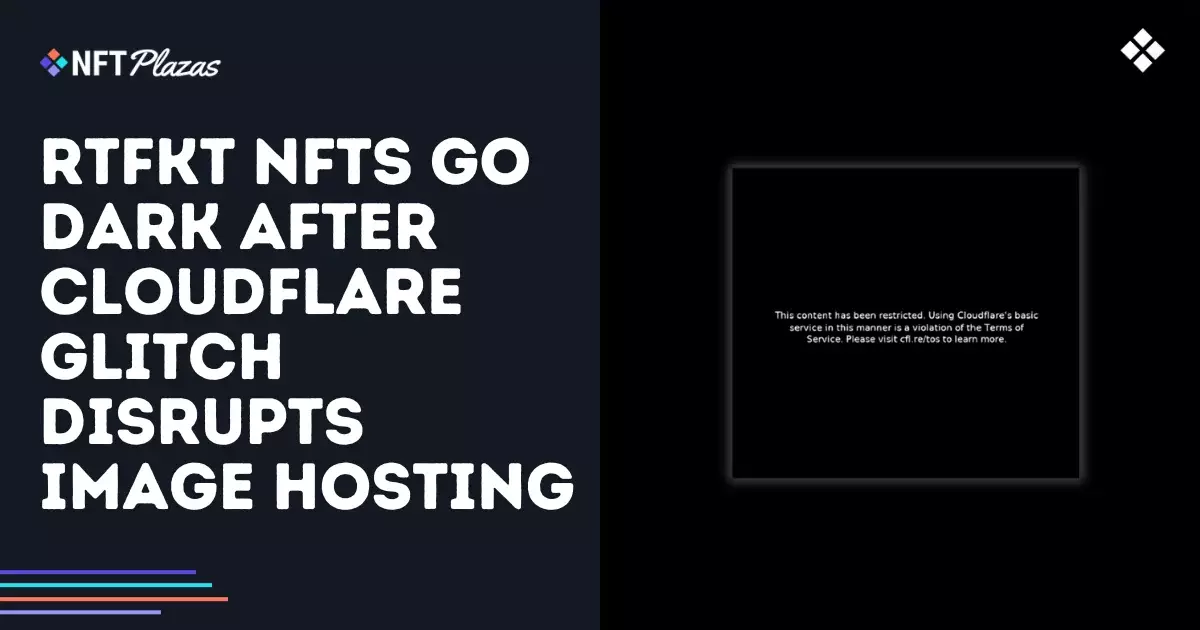The recent incident involving RTFKT’s popular NFT collections, Clone X and Animus, serves as a glaring reminder of the dangers associated with centralization in the digital asset landscape. On April 24, collectors were abruptly confronted with blank screens instead of their vibrant digital artworks, all due to a terms of service violation attributed to Cloudflare’s hosting capabilities. Though the underlying metadata and ownership records remained untouched on the Ethereum blockchain, the momentary blackout exposed a significant vulnerability: reliance on third-party services can unravel the sense of ownership that NFTs promise.
In our increasingly digital economy, it’s disconcerting to see how easily the values tied to these assets can be compromised. Cloudflare’s decision to downgrade the account responsible for hosting RTFKT’s files highlights a systemic issue that must be addressed by developers and collectors alike. While the integrity of NFTs should reside on the blockchain, the visual components—often the very essence of collectible art—are perilously tethered to external infrastructure that can fall victim to arbitrary corporate policies.
Lessons for Future NFT Developers
As the dust settles on this incident, it becomes apparent that developments in the NFT space must move toward decentralized storage solutions. RTFKT’s former Head of Technology, Samuel Cardillo, emphasized the urgent need for a transition to Arweave, a decentralized platform engineered for permanence and resilience. This migration is not just a sensible decision; it is a necessity in the modern digital landscape, where the fragility of centralized services can lead to unexpected disruptions.
The transition to decentralized storage is projected to cost approximately $2,800, a small investment relative to the potential losses if collectors are unable to access their digital assets. This pivot represents a vital shift not only for RTFKT but for the broader NFT community. We must champion these changes, insisting upon sustainable and forward-thinking frameworks that prioritize the security and permanence of digital art.
Implications for Collectors and Their Rights
The ramifications of these digital slip-ups extend far beyond inconveniences for collectors; they raise serious concerns about rights and ownership in the NFT domain. When a collector invests in an NFT, they expect not only proof of ownership but also access to the artwork itself. The disappearance of images underscores a larger issue: if collectors are merely renting access to art rather than owning it in a traditional sense, we could be witnessing a catastrophic misalignment of expectations versus reality.
The need for robust legal frameworks surrounding digital ownership has never been clearer. As NFTs garner further mainstream attention, we must urgently advocate for clearer terms of service and ownership rights. Failure to act could lead to a tumultuous future where collectors find their investments at the mercy of arbitrary corporate decisions.
While the NFT market offers unprecedented opportunities for creators and collectors, incidents like the RTFKT debacle call for critical reflection and adjustment. The time is ripe for decentralization in data storage, ensuring that the rich tapestry of digital art remains accessible to its rightful owners, uninhibited by the pitfalls of centralization. The lesson is clear: amidst an exciting digital future, we must prioritize the security and permanence of our cultural artifacts.

